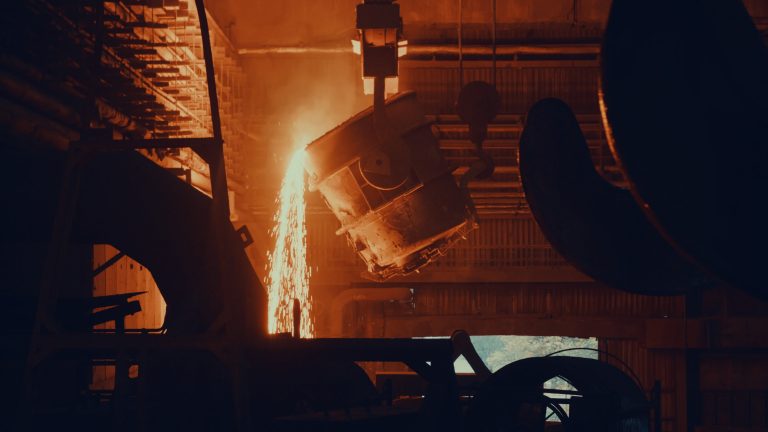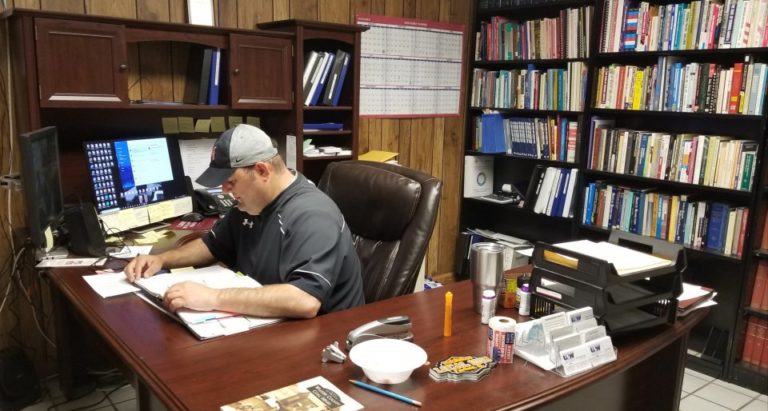Trade action saved America’s steel industry.
But the global overcapacity crisis continues. Until it’s resolved, Section 232 must remain in place.
When Kameen Thompson started working at the Conshohocken steel mill outside Philadelphia about 16 years ago, there were more than 300 specialty workers employed at the facility. Then the layoffs began.
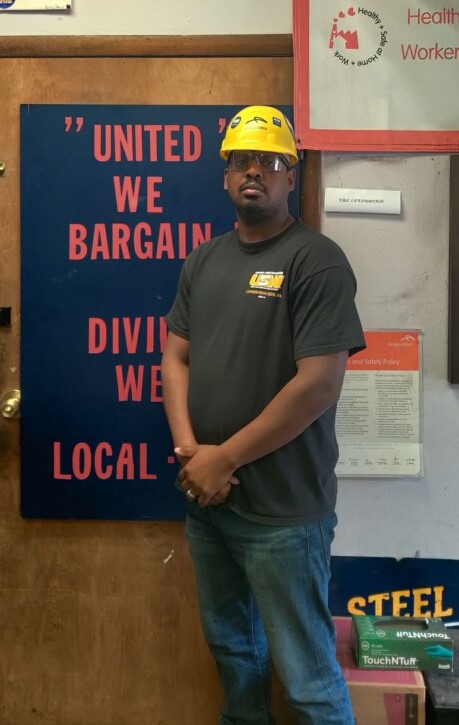
By 2018, the number of employees had dwindled to just 75 people, and the Conshohocken mill was at risk for closing its doors entirely. Years of unfair trade practices by countries like China and other foreign governments created a glut of steel on the global market, leading to the dumping of steel products into the United States and threatening the livelihood of the entire American industry.
Along with the loss of good-paying jobs, Conshohocken’s closure would have been damaging to America’s national security. Steelworkers at the facility make military-grade armor and high-alloy steel, which is used in the U.S. Naval fleet and other military operations.
Thankfully, Conshohocken did not close. In fact, employment is up. The mill plant has hired an additional 75 workers because of “Section 232” tariffs placed on imported steel in 2018.
“Without tariffs in place, we do not protect the national security of this country,” said Thompson, who also serves as president of United Steelworkers (USW) Local 9462. “We cannot depend on another country if anything happens on our turf and we have to rely on steel to come across the ocean to get to our country for us to fabricate the things we need to protect the people of this land when we have it right here on our own soil.”
Over the last two decades, too much investment in global steelmaking by foreign governments has undermined American steelmakers and workers like Thompson. While China is the main culprit, accounting for over half of the world’s steel production, countries such as India, Brazil, Turkey, South Korea, and even European Union nations also are contributing to the problem.
These countries often heavily subsidize their steel industries — and in many cases, the industry is outright owned by the government. That means these steelmakers don’t have to abide by market forces. Instead, they produce as much steel as they can and dump it onto the global market at rock-bottom prices. Turning a profit is seemingly irrelevant to these government-owned steel producers.
But U.S. steelmakers and workers do operate in a free market. They can compete against anyone on the planet, making some of the best steel products around while also abiding by strict labor and environmental guidelines. What they need, however, is a level-playing field.
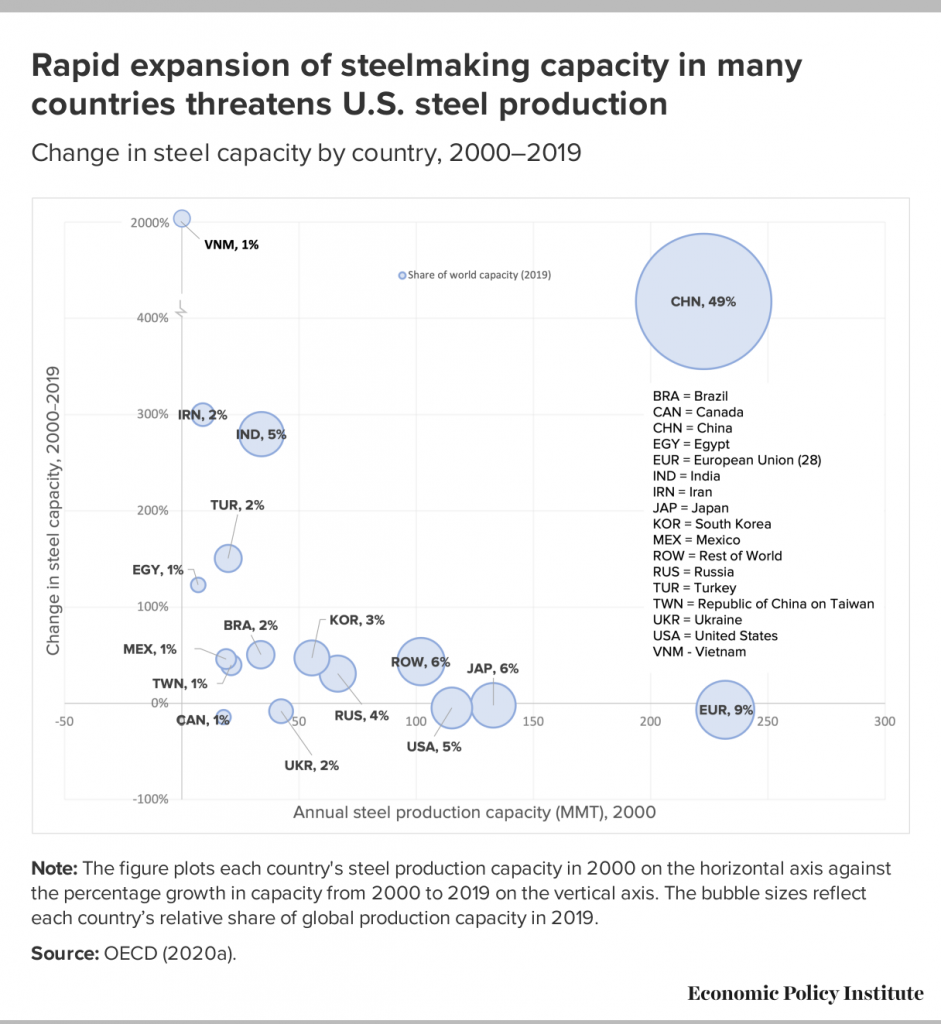
The Obama administration took on the problem of global steel overcapacity by placing high tariffs — some up to 620% — on specific steel products. But by 2018, importers had found ways to evade these measures and global steel overcapacity had gotten so bad that it was clear a targeted approach to unfairly traded steel was not enough.
The Trump administration determined steel imports posed a national security threat, and imposed a 25% tariff on steel products under Section 232 of the Trade Expansion Act of 1962.
Roughly three years later, it’s clear Section 232 worked. According to the Economic Policy Institute, Section 232 curbed steel imports by 27% in 2019. That led to $15.7 billion in direct steel facility investments, an additional $5.9 billion in plant acquisitions, and the creation of 3,200 new steelmaking jobs.
While Section 232 played a significant role in safeguarding the steel industry, it also had “no meaningful real-world impact on the prices of steel-consuming products,” EPI researchers found. Price changes in steel-using goods like new motor vehicles, construction equipment, household appliances, electrical equipment and other durable goods were “statistically zero or economically negligible,” EPI reported.
Commerce Secretary Gina Raimondo recently affirmed that Section 232 is working, noting that it “helped save American jobs in steel and aluminum industries.” U.S. Trade Representative Katherine Tai also has called Section 232 “a legitimate tool in the trade toolbox” to addressing unfair trade distortions and national security concerns.
But now there is a push to remove Section 232, both from importers and even some American allies abroad. The United States and European Union are set to hold diplomatic talks later this year on steel overcapacity.
Until a permanent, enforceable global solution is in place that finally solves the problem of steel overcapacity, the Section 232 tariffs must remain.
On top of unresolved global overcapacity, the COVID-19 pandemic further damaged the steel industry, which is now working to meet sporadic and unpredictable demand driven by reopening. If Section 232 is removed now, without the global crisis resolved, the industry is likely to be gutted. That would seriously threaten our economic and national security, make it more difficult for U.S. producers to make investments that reduce carbon emissions, and eliminate a pathway to the middle class for Americans across the country.
“If you want to protect the people of this country, if you want the steel industry to come back, if you want the economy to come back, keep the tariffs in,” Thompson said. “If you want to create good-paying jobs, keep the tariffs in. It you want our national security to be as strong as ever, keep the tariffs in.”

Steel is Essential
to America’s Security
At the height of the wars in Iraq and Afghanistan, American troops were being regularly attacked by improvised explosive devices. The U.S. military needed to better equip troops with protective gear, and fast.
The Pentagon turned to two steel mills in Pennsylvania for help, including the Conshohocken plant (where Thompson works) and its sister facility Coatesville. The mills quickly pivoted production in order to make specialized steel armor plate for 18,000 unarmored Humvees that needed protection.
It wasn’t the first time the steel industry has stepped up to protect American servicemembers. American-made steel has long been an essential part of America’s national security, from the Arsenal of Democracy to the wars in Iraq and Afghanistan. That continues today. Roughly 17 million tons of steel plate is needed for the military’s 8,500 Abrams tanks, for example; about 50,000 tons of steel plate is needed to build a Nimitz-class aircraft carrier.
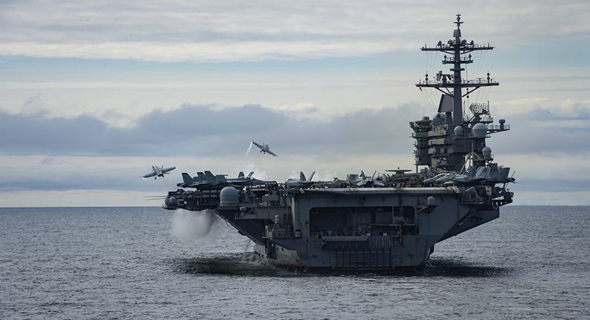
But the offshoring of production of much of our defense industrial base, including to potential adversaries like China and Russia, already has put our national security at risk. Unfortunately, the COVID-19 pandemic has meant the United States has now experienced the consequences of not being able to produce the supplies we need in a crisis. We need to learn from those mistakes.
Losing the ability to make steel would be devastating, not only for the military but also for other vital uses, like our critical infrastructure.
The danger is closer than you may think. Today, there is just one remaining producer of grain-oriented electrical steel in the United States, which is needed to help power the electric grid. This type of steel will be even more critical in the coming years, as consumers plug in their EVs at home and the nation transitions to a clean energy economy. Swapping imported oil for imported clean energy infrastructure is a fools errand.
Indeed, steel is used extensively throughout U.S. infrastructure, from roads and bridges to public transit to water pipelines and treatment plants to even food and agricultural systems.
Pete Trinidad represents more than 3,000 steelworkers in Burns Harbor, Ind., as president of USW Local 6787. He’s also a Marine veteran — and knows just how important it is to maintain a strong steel industry in the United States.
“Lifting the 232 tariffs would be devastating because foreign imports will just crash back in. We need to make steel in America at about 80 to 90 percent [capacity] because if we need to make battleships or tanks, we can just switch over and be able to do that,” he said.
“If we are shut down and relying on foreign steel and we go to war with China or Russia, do you think they are going to continue to give us steel? We need to be reliable. Thank God the auto industry was able to switch over and make ventilators in a time of need like we just had.”
The American steel industry is absolutely vital to America’s national and economic security. That’s why it is so important that the United States takes steps to level the playing field for U.S. steelworkers and companies and ensure that we maintain a strong, robust industry. If the United States loses its ability to make steel, it loses its ability to build critical infrastructure and keep its citizens safe.

Steel Overcapacity and Climate Change
While the national security threats of overcapacity are clear, the global steel glut also is contributing to a danger of another kind. Rising carbon emissions pose a threat to the future of our planet, and the steel industry will have a key role to play in addressing this threat.
Steel companies in the United States operate under some of the strongest environmental rules, and thus already have lower emissions than their overseas competitors. The American steel industry has voluntarily reduced its energy intensity by 31% and its greenhouse gas emissions by 36% since 1990, according to the American Iron and Steel Institute. The U.S. Department of Energy has indicated that the steel industry in the U.S. has the lowest energy intensity and second-lowest CO2 emissions intensity of any major steel producing country. And according to a 2021 study by the Climate Leadership Council, the U.S. steel industry is 75% to 320% more carbon efficient than global producers, depending on the product segment.
But American steel companies know it isn’t enough, and have announced a number of initiatives to further reduce emissions.
U.S. Steel, for example, announced a new product line called verdeX, which will produce only a quarter of the carbon emissions previously produced in the steelmaking progress. The company also has pledged to be carbon neutral by 2050.
Cleveland Cliffs also has put forth a handful of environmental commitments, with the goal of reducing its greenhouse gas emissions by 25% by 2030 from its 2017 levels. In 2019, the company exceeded the U.S. 2015 Paris Agreement pledge of 26% to 28% greenhouse gas emissions reduction from 2005 baseline levels – six years ahead of target.
Meanwhile, a surge in production from China’s steel companies led to a record amount of CO2 emissions in 2020. China’s overall greenhouse gas emissions in 2019 exceeded those of the United States and other developed nations combined.

Addressing global industrial overcapacity isn’t just important to our national security or economy; it’s also vital to the health of the planet. It’s another reason to take steps to safeguard U.S. production and level the playing field for American workers.
“They don’t have labor laws over there in China. They don’t have any EPA regulations so they can have cheap labor making cheap steel and sell it for the cheapest price they can,” Thompson said. “They want to dominate the steel market.”
He continued: “If they dropped the 232 tariffs, China would be back in our country doing what they want to do dumping more steel back in our country. If they don’t keep the tariffs on, China will be back doing what they had been doing and it will hurt some steel companies.”
American steel companies and workers are making significant investments to reduce their environmental impact and lower carbon emissions. Should the United States become dependent on steel imports, we will be forced to import polluted goods from places like China and other polluting sources, making it even harder to mitigate the impacts of climate change.
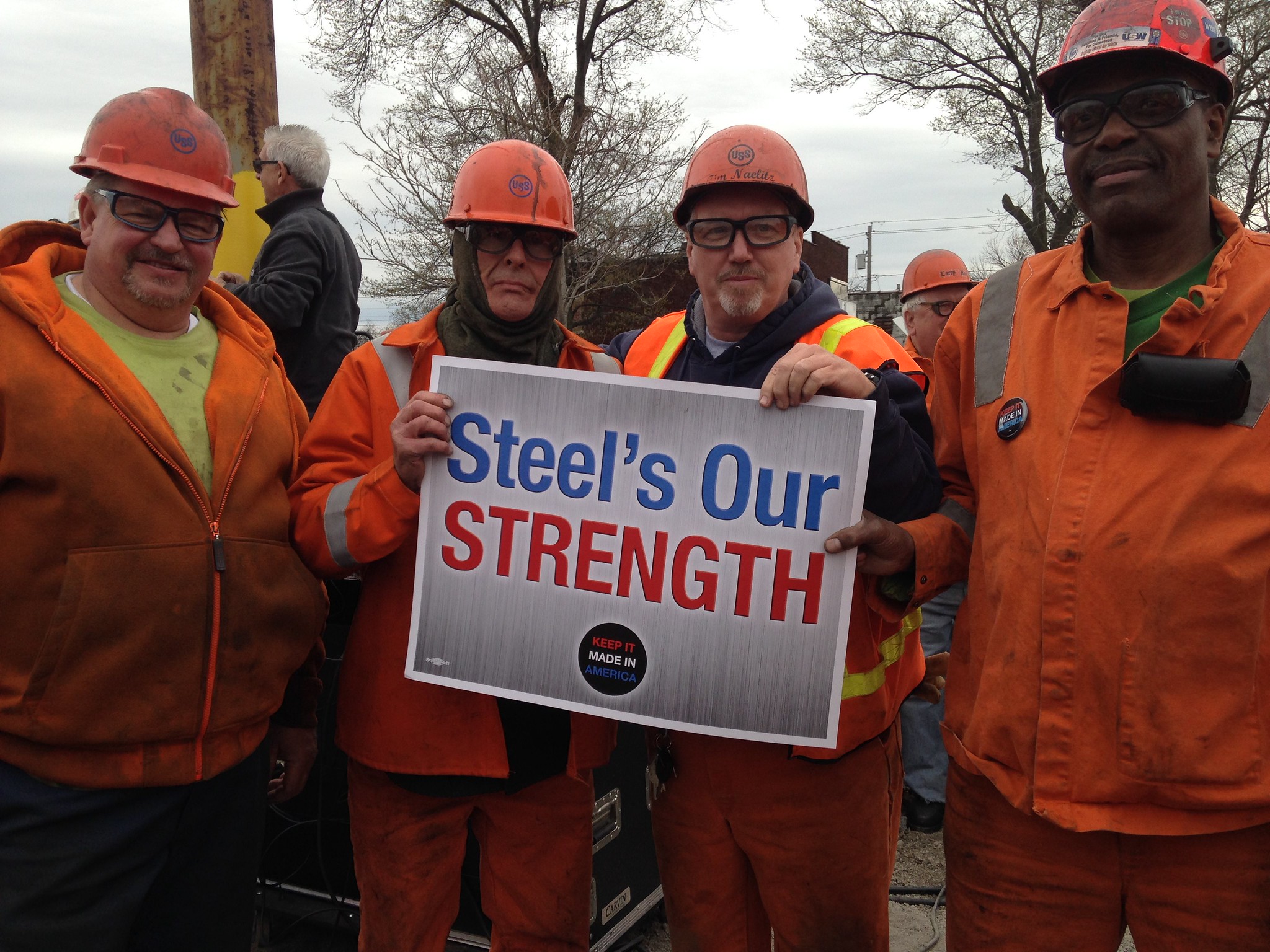
The Backbone
of the Middle Class
Steel long has been called the backbone of the American economy. It’s needed to build everything from bridges and skyscrapers to home appliances and motor vehicles. The steel industry provided more than $520 billion in economic output in 2017, generating $56 billion in tax revenue.
The American steel industry is also the backbone of the middle class. Good steel jobs helped drive the growth of the middle class in the 20th century, and the industry continues to support nearly 2 million jobs across the country.
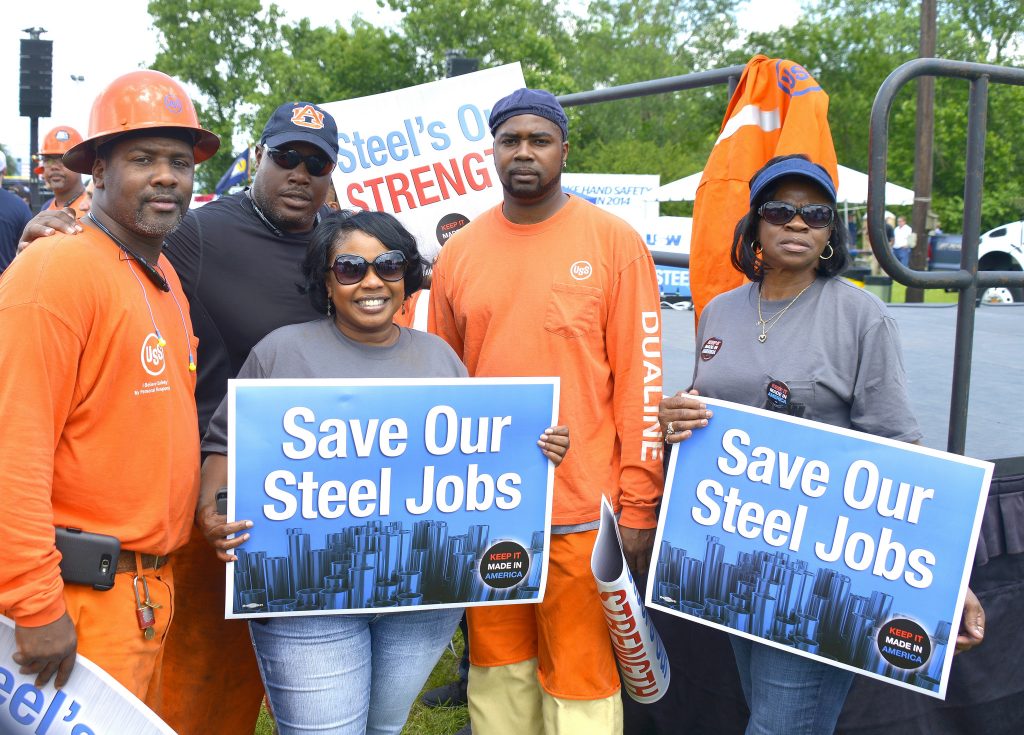
A steel job is a good job, too. In 2017, before the Section 232 import measures went into effect, steel jobs paid on average 27% more than the median earnings for men and 58% more than the median for women. Many jobs in the steel industry are unionized, with workers represented by the USW and other unions.
But the the steel industry doesn’t just support its own employees. In many communities, the steel mill serves as the center of the entire economy. It supports everyone from the local businesses that supply or service the mill to nearby restaurants and coffee shops that cater to workers to the schools and nonprofit organizations that rely on support.
So when the global steel overcapacity crisis led to steel facilities idling or closing entirely, entire communities felt the pain. That certainly was the case in Granite City, Ill., which is home to U.S. Steel’s Granite City Works.
That mill was idled in December 2015. Along with the loss of 1,800 direct steel jobs, the facility’s closure also meant all of Granite City struggled, as the heart of the local economy had suddenly disappeared.
But June 5, 2018 was a red-letter day for Granite City Works. That was the day the versatile steelmaking facility fired up the first of its two blast furnaces after they were idled for two years and two months.
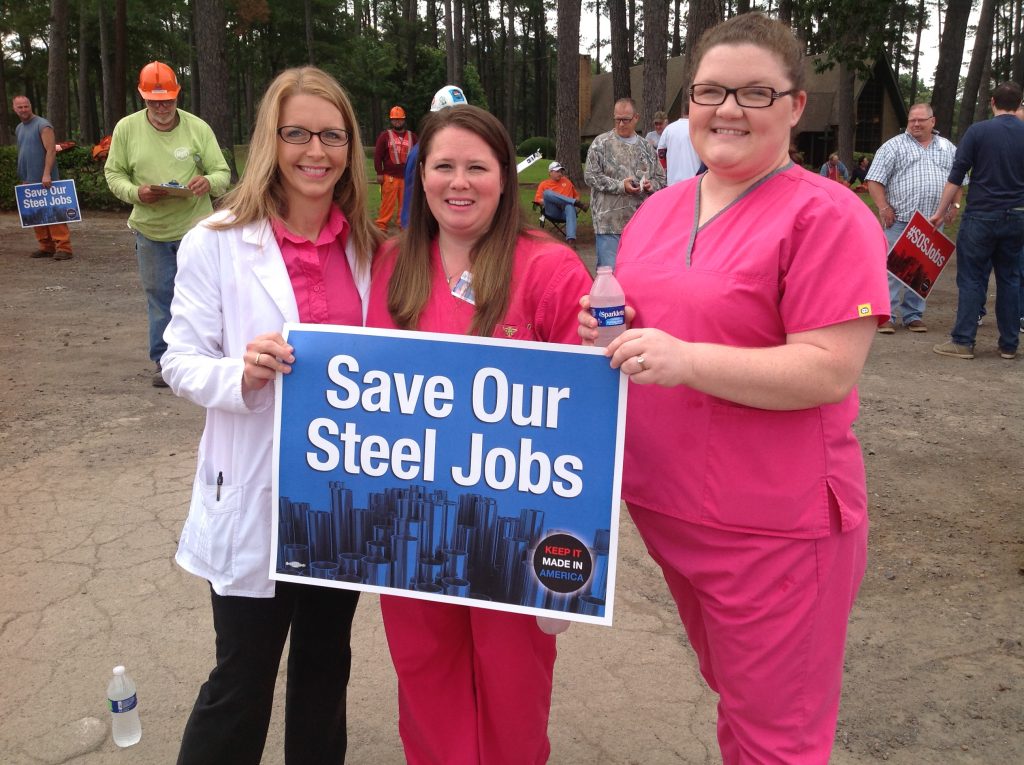
Dan Simmons, a USW official in Granite City, said the Section 232 tariffs saved the American steel industry and led to investments that revitalized Granite City Works into one of the most productive steel mills in the country.
“The 232 tariffs mean sustainability for us and obviously keeps the dogs off the porch, the other countries that are illegally dumping,” Simmons said. “The tariffs give us an opportunity to level the field and compete with them and it means the world to us right now. Until we figure out a way to rewrite some of our antiquated trade laws, to protect the manufacturing sector here in the United States from getting illegally dumped (on), that 232 is exactly what was needed to give us some breathing room to reinvest some capital into the mills and get a little more modernized and a little more competitive.”
Simmons is the president of the USW Local 1899, which today represents approximately 1,400 steelworkers at the fully integrated Granite City Works. Simmons has worked there for 43 years, having started his steelmaking career at the age of 18.
When Simmons hired in at Granite City Works in 1978, there were approximately 4,800 employees working at the mill. In 2018, with steelmaking operations shut down, the Granite City facility was barely hanging on with less than 700 workers who were basically just doing finishing work, mostly on steel slabs manufactured at U.S. Steel’s Gary Works in Indiana and Edgar Thompson Works in Pennsylvania.
“We were seeing – and I am a baseball player, so my analogies are always a lot in baseball – but we were hitting singles with these trade cases, which got us little pieces of our doors open,” Simmons said. “We had some skeleton crews in different departments seeing small signs of life, just hitting singles.
“The 232 was the one we needed to get the steelmaking back open and that’s what it did. With that it was kind of like hitting that home run with the 232 tariffs and that enabled to call all our laid-off people back, get the doors back open and get the blast furnaces back lit and making steel.”
Steelworkers Share Their Stories
What Needs to Happen Now?
Section 232 national security action stabilized the American steel industry in the face of a global crisis. But unfortunately, the overall steel overcapacity crisis continues. A lot of it is driven by China, which was responsible for 56.5% of global crude steel production in 2020. In fact, China produced more than 1 billion tons of steel in 2020.
But it is not just China driving the problem. “India, Turkey, Iran, South Korea, Vietnam, Russia, Brazil, Mexico, Taiwan and many countries in the European Union have all achieved rapid capacity growth thanks to state intervention and trade-distorting policy,” Rob Scott and Adam Hersh of the Economic Policy Institute recently wrote.
That’s why it is so important that the United States work with its allies to find a way to end global industrial overcapacity and level the playing field for American workers and steelmakers. But until that time, the Section 232 tariffs must remain in place.
Now, critics of Section 232 often argue that the tariffs hurt “downstream” businesses that use steel in their production. But Scott and Hersh noted “that hasn’t been the case.”
“Our study found price changes in basic steel products had negligible causal effects on the prices of steel-using goods like motor vehicles, construction equipment, electrical equipment, household appliances, motor vehicle parts, nonresidential construction goods, food and other durable goods – the vast majority of the industries accounting for the majority of U.S. steel consumption,” they wrote.
Trinidad pointed out that some countries already are finding ways around the tariffs, which itself threatens the industry’s recovery.
“Even the 232s, there were all kinds of exemptions that were made for that,” he said. “There are countries that are exempt. And then you’ve got China and these other countries that find these open back doors and move and jockey around. They are buying, trading and flopping, and the steel never leaves the boat, even though it has been sold three times and the next thing you know it’s from Turkey, Vietnam or Japan. And it’s coming into our ports. We have to be careful.”
Aside from tackling the global problem of steel, there are other things that U.S. policymakers can do to strengthen American industry. Investing in rebuilding infrastructure — one of the things at the top of the policy agenda for the Biden administration — will ramp up demand for steel and significantly grow the domestic steel market.
By including strong Buy America provisions with any legislative package that goes to fund infrastructure, policymakers can make sure the iron and steel that goes into our nation’s new bridges, roads, pipelines, transit systems, energy grid, and more are all made by American steelworkers and companies.
Above all, the United States must be ready and willing to take action to shore up steel. It’s essential to our national security and the backbone of the American economy. American-made steel supports nearly 2 million good jobs, and America’s steel companies and workers are ready and willing to be part of the solution to achieving our climate goals.
“We can’t do away with the 232 tariffs without having something as good or better in place to protect our markets. We’ve already experienced the race to the bottom, and we don’t want to get into that race again,” Trinidad said.
“Nobody in the world can compete with our steelmaking capabilities.”
Story Credits: Text by Elizabeth Brotherton-Bunch and Jeff Bonior. Edited by Matthew McMullan.
Additional Resources
Learn more about why Section 232 is vital to America’s national and economic security.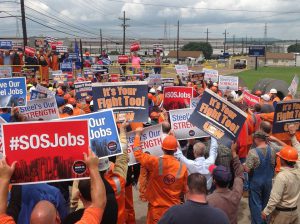
Steel Overcapacity: Trump Performed Triage. Can Biden Heal the Wound?
To achieve a long-term global solution to overcapacity, we will need cooperation and action from others. Yet, we must not substitute dialogue for action.
Read MoreSteel Overcapacity: Trump Performed Triage. Can Biden Heal the Wound?
To achieve a long-term global solution to overcapacity, we will need cooperation and action from others. Yet, we must not substitute dialogue for action.
Read MoreSteel Overcapacity: Trump Performed Triage. Can Biden Heal the Wound?
To achieve a long-term global solution to overcapacity, we will need cooperation and action from others. Yet, we must not substitute dialogue for action.
Read More
